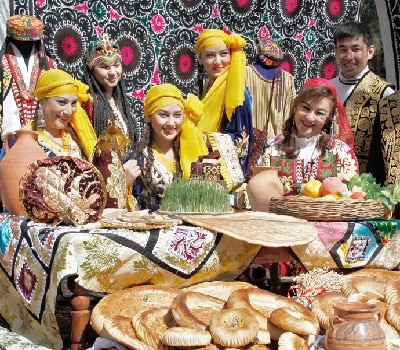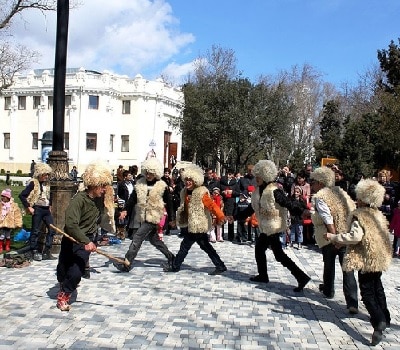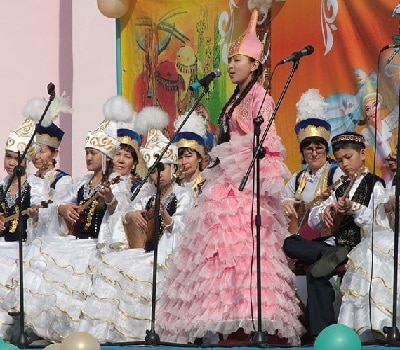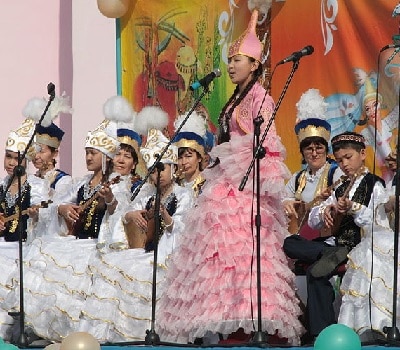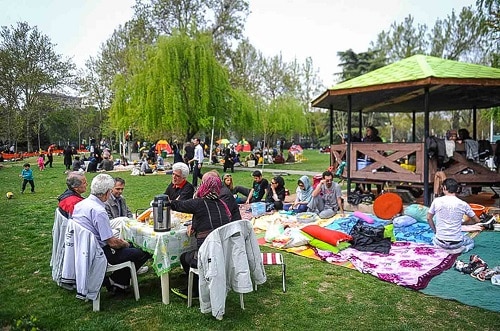Nowruz is the largest national holiday of Iranians, which begins in the first month of the solar year – when the sun is transferred to the Aries and the day and night are equal. In astronomy, the Rabi’i equinox, or Spring equinox in the northern hemisphere, refers to the moment when the sun passes through the Earth’s equator and goes north of the sky. This moment is called the first moment of Aries. In the solar Hijri calendar, the moment of delivery of the year determines the first day of Farvardin (first mount of solar Hijri year). Nowruz in the Gregorian calendar corresponds to March 20, 21 or 22.
Nowruz literally means a new day and in the term a celebration that is taken at the beginning of April. The ancient Iranians referred to Nowruz as Nava Serda, meaning New Year. The Iranian people of Central Asia also named Nowruz during the Sogdian and Kharazmshahian times and called it Nosarji meaning New Year. Nowruz, a celebration with Iranian roots that is more than 3,000 years old and is celebrated by nearly 400 million people today, has been registered in the UN General Assembly. On March 27, 2010, the first World Nowruz celebration was held in Tehran and this city was known as the “Secretariat of Nowruz”.
History Of Nowruz
Some historical narrations attribute the beginning of Nowruz to the Babylonians. According to these narrations, the prevalence of Nowruz in Iran dates back to 538 BC, the time of Cyrus the Great’s invasion of Babylon. Also, in some narrations, Zarathustra is mentioned as the founder of Nowruz. In some ancient Iranian texts, including Ferdowsi’s Shahnameh and history Tabari, Jamshid and in some other texts, Kio mars has been introduced as the founder of Nowruz.
Ferdowsi, who used Pahlavi sources, narrated the creator of Nowruz in the Shahnameh in such a way that Jamshid, while passing through Azerbaijan, ordered that a throne be placed for him there and he himself sat on the throne with a golden crown. When the sun reached his golden crown, the world became bright and people rejoiced and called that day the new day.
جهان انجمن شد بر تخت اوی فرومانده از فرّه بخت اوی
به جمشید بر گوهر افشاندند آن روز را روز نو خواندند
چنین روز فرخ از آن روزگار بمانده از آن خسروان یادگار
Geography of Nowruz
The areas where Nowruz is celebrated today include many countries. Some Nowruz rituals are different in these countries.The geography of Nowruz includes Bahrain, part of Yemen and Oman, UAE, Kuwait, etc., Balkans, Tajikistan, Turkmenistan, Uzbekistan, Azerbaijan, Kazakhstan, Tatarstan, and all of Central Asia, West China (China Turkestan), part of Sudan, Zanzibar, Turkey, Syria, Iraq, across the Caucasus to Astrakhan, as well as parts of North America, India, Pakistan, Bangladesh, Nepal, Tibet.
On March 30, 2009, the Federal Parliament of Canada named the first day of spring each year as Nowruz Day, the national holiday of Iranians and many other ethnic groups. On February 24, 2010, the United Nations adopted a resolution. The resolution recognized Nowruz as the International Day of Nowruz and a culture of world peace at the organization’s headquarters in New York.
Nowruz rituals
Nowruz ceremony in Iran consists of various celebrations and rituals. The following are some of these customs.
Housecleaning
Cleaning house is one of the rituals of Nowruz in which all the house and its furniture are dusted, washed and cleaned on the eve of Nowruz. This ritual is held in different countries including Iran, Tajikistan and Afghanistan.
Nowruz Visits
Visiting each other in Nowruz or Nowruz visiting, is one of the traditions of Nowruz, common in most countries where they celebrate, in some areas, it is common to remember the ancients and Going to their graves. Nowruz day begins with visiting their relatives and relatives.
Nowruz New Dress Up
Wearing new clothing is part of the essentials of Nowruz day that people must meet relatives and friends in new clothes
Travels
In Iran, Nowruz holidays are usually accompanied by a high volume of tourism trips. Since Iran is a country with many natural, historical and tourism attractions, the statistics of these trips have been growing over recent years.
Nature Tourism in Nowruz and 13 Bedar
On April 1th, Iranians go to natural facilities such as parklands, gardens, forests and areas outside the city and enjoy hours in nature. This day is called Sizdah-beh-dar (13th and last day of Nowruz) in Iranian culture. To get more information about 13 Bedar follow the link below:
Nowruz Holiday
Almost half of The Month of Farvardin (the first month of Solar Hijri year) due to Nowruz is closed and is half closed. You can see for detailed explanation of this subject to the iranian holiday that link is available below.




